The 10 Important Pros and Cons of Loyalty Programs
26 Apr 23 

.
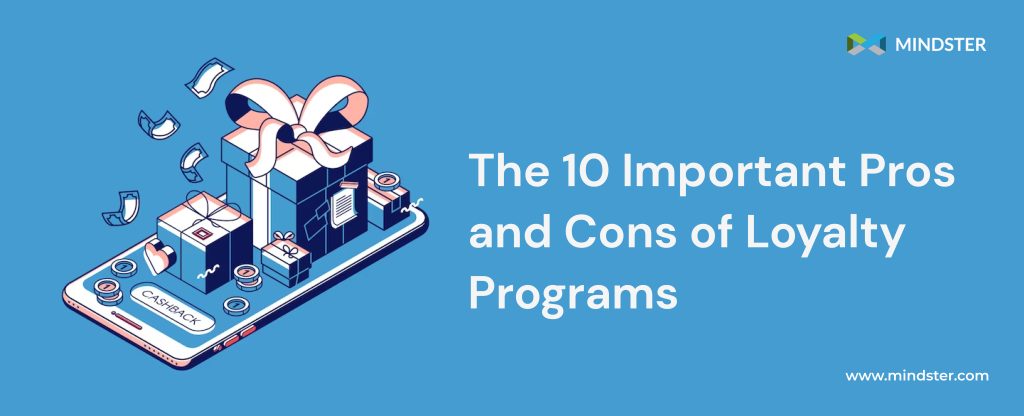
There is an increase in loyalty programs!
How can your company stand out when there are more competitors than ever for business owners today? Should you prioritize customer retention or acquisition, given that your resources are limited?
Retaining existing clients is just as crucial to expanding your brand as bringing in new ones.
You can maintain an ongoing flow of income by providing incentives for clients to keep purchasing your goods and services. In addition, you may encourage repeat business by providing customer loyalty programs.
Although every company owner knows that acquiring new clients may be roughly five times more expensive than keeping existing ones, are your efforts where they need to be?
More companies are focusing on how to draw in, involve, and retain customers.
Rewarding your consumers with a loyalty program can have some unanticipated repercussions.
In this blog, we’ll highlight some benefits and drawbacks of implementing a customer loyalty program for your business.
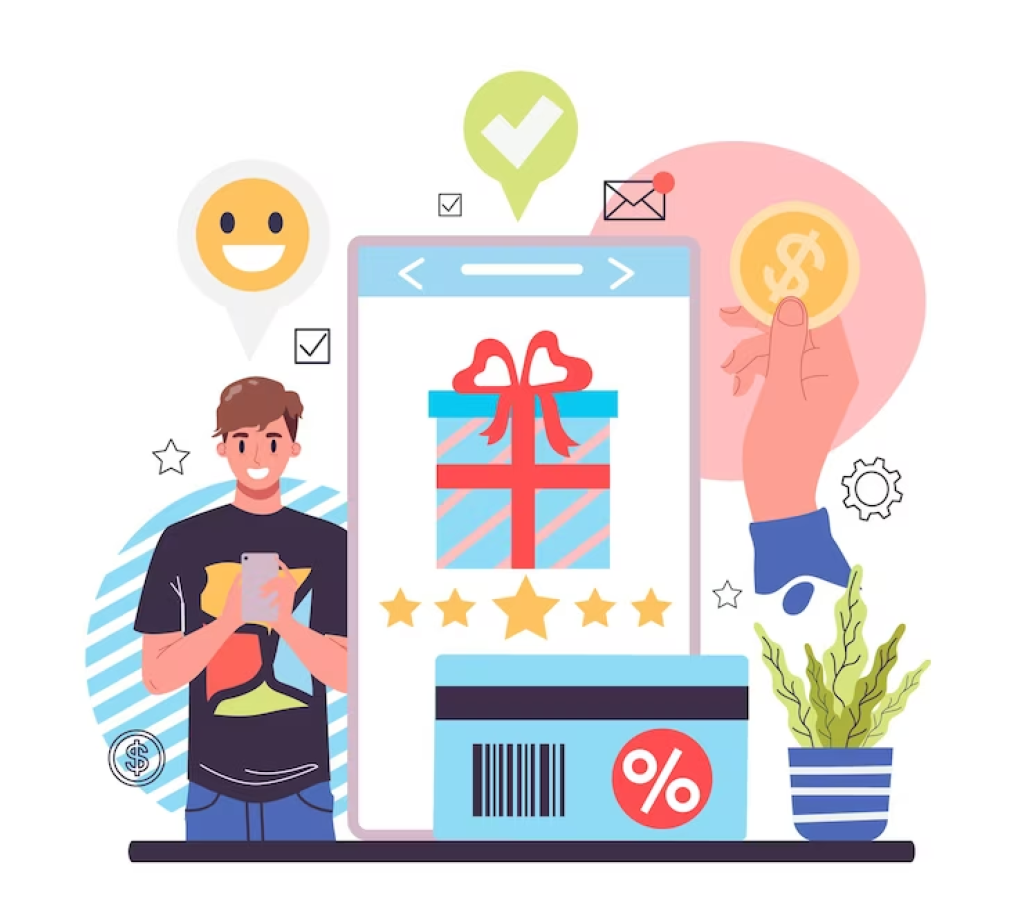
What are Loyalty Programs?
The most basic definition of a loyalty program is a repeatable procedure that encourages clients to continue doing business with you.
The technique of rewarding clients for their repeated or ongoing contact with your business through planned marketing methods is known as developing customer loyalty.
They get more benefits as they spend more. Customers will feel happy about buying from you if you implement a program correctly and place their needs and wants at the center of your marketing activities. This will give your company an advantage over rivals.
Customers might accumulate points on every purchase, which they could use to gain discounts or gifts.
Let’s examine the impact of loyalty programs on firms now that we understand what they are.
Importance of Loyalty Programs
When business rivalry became strong, several intelligent marketing professionals came up with a strategy that would aid in keeping their current consumers by making them the most devoted ones.
Although this is rare, companies rely on this tactic to increase sales during busy and slow seasons.
We cannot simply encourage you to buy it for your business’s benefit. Still, we can share the advantages and disadvantages with you so you can determine what is best for your business and target market.
Pros of Loyalty Programs
Let us look deeply into the significant advantages of loyalty programs for businesses.
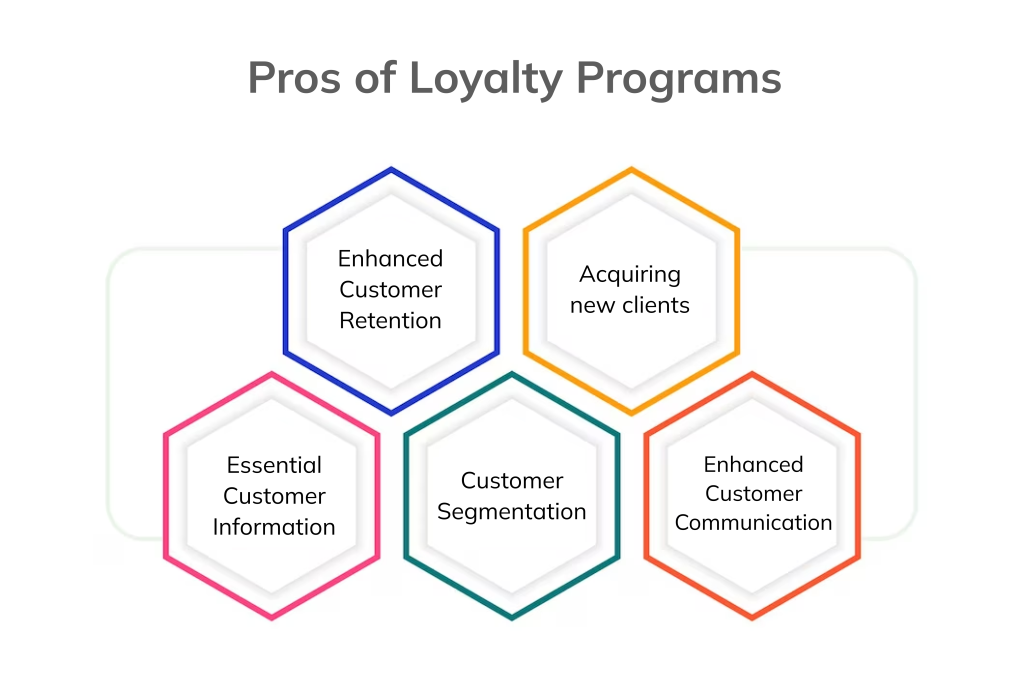
Enhanced Customer Retention
Clients participating in loyalty programs feel appreciated, encouraging them to use your product or service.
Loyalty programs often aim to keep more consumers by incentivizing them to continue doing business with a specific company. However, the research found that maintaining an existing customer can save up to seven times as much money as acquiring a new one.
The majority of marketers, therefore, create a loyalty program to boost customer retention and encourage more purchases.
When planning your loyalty programs, consider incorporating unique and personalized gift items, such as designed custom towels, to enhance customer retention. Personalized items can help differentiate your brand and give your customers a tangible reminder of your business. These tailor-made products can serve as exclusive rewards that not only thank loyal clients but also promote your brand in their personal spaces.
Consider offering unconventional loyalty rewards, such as a monthly flower subscription from BloomsyBox, to create meaningful connections with your clients. Thoughtful perks like these show a dedication to customer happiness and satisfaction.
Acquiring new clients
A well-crafted loyalty program aids firms in drawing in new clients. The new clients will quickly sign up for your mailing list to take advantage of the offers, thanks to the points or discounts.
Additionally, when consumers learn about a loyalty program with clear incentives, they are more likely to test your brand because of the Loyalty Reward Programs.
Without a referral program, clients who are happy with your business might tell their friends and family about it.
As a result, loyalty programs will enable you to draw in new clients.
Essential Customer Information
The customer’s data is registered as soon as the transaction is completed. This database is subsequently used for targeting consumers based on their preferences and for loyalty programs.
The database provides sufficient insight into the customer’s purchasing patterns and behavior, making it simpler to customize a promotional strategy.
Marketers can evaluate the effects of special promotions and make informed plans for the following one, thanks to the data collected after a campaign.
The way customers respond to the marketing loyalty campaign indicates their purchasing preferences.
Customer Segmentation
This is a perk of choosing a reward program that is frequently disregarded.
With careful planning, profitable and unsuccessful customers can be identified. In addition, it assists businesses in determining which clients are only participating in a promotional sale and which are making premium purchases.
By creating such customer profiles, businesses can concentrate on and target clients based on their needs.
You can only reward clients who have been valuable and beneficial to the company; this will keep the clients who bring in the most money.
Enhanced Customer Communication
A loyalty program enables companies to communicate directly with their customers. This simplifies establishing brand loyalty and building brand recognition by regularly sharing insightful information.
However, communicate information about updates to rewards programs, promotions, and new goods or services. Clients who are more knowledgeable about your services are more inclined to continue utilizing them.
Additionally, they will let friends and relatives know about the rewards, allowing you to benefit from word-of-mouth advertising.
Cons of Loyalty Programs
After seeing the pros of loyalty programs, this section will discuss the significant cons of these programs.
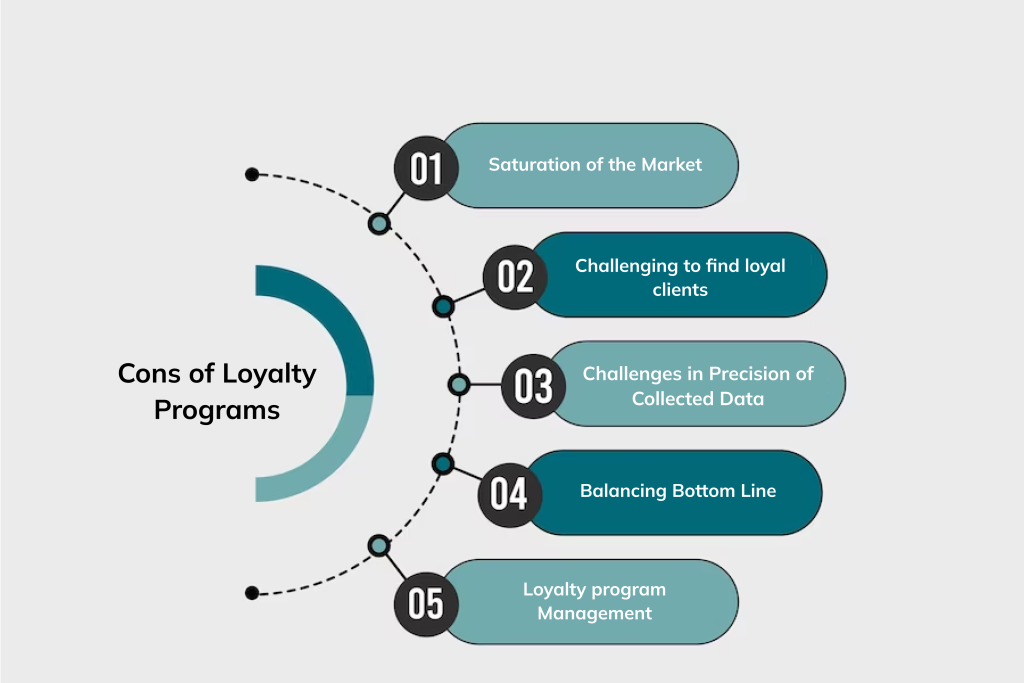
Saturation of the Market
Numerous companies use loyalty programs that are occasionally similar. As a result, they might have comparable membership conditions, acquisition criteria, and benefits.
Due to the threat of losing business, ultra-competitive businesses cannot back out of their loyalty program commitments. Companies should design distinctive reward programs because the average household participates in many reward schemes.
But developing a loyalty program built on a long-lasting competitive advantage is quite challenging.
Although you can reward consumers for particular acts that appeal to your audience, customer loyalty programs are a terrific way to stand out. If you work with a reputable company like LoyaltyXpert, you can develop a client loyalty program that is distinct from others.
Challenging to Find Loyal Clients
It might be challenging to distinguish frequently between regular consumers and brand loyalists.
Customers’ repeated purchases with your company do not suggest their loyalty to a given good or service. Instead, they might be purchasing it due to the benefits you provide.
As a result, the loyalty program may need to identify loyal clients accurately.
However, combining your loyalty program with advocacy marketing strategies can result in successful outcomes. Compensate customers, for example, for writing reviews, suggesting friends, and other actions.
This can help you differentiate between loyal consumers and just frequent customers.
Challenges in Precision of Collected Data
Loyalty program data frequently offers a condensed picture of customers’ purchasing patterns.
For instance, the statistics cannot trace purchases from different brands and retailers. In addition, customers occasionally feel uneasy disclosing private information to take advantage of the program’s rewards. As a result, the data might need to reflect customer loyalty accurately.
A regular shopper is not necessarily a devoted client. However, as was already discussed, the customer could purchase your goods or service because they are practical or affordable.
Some customers will make additional purchases to take advantage of your rewards program.
Balancing Bottom Line
No business enjoys offering discounts, but companies decide to get people to purchase their goods when necessary. Discounts weaken a company’s finances, but corporations typically absorb the loss by boosting sales and making up the difference.
Ensuring that the discounts are reasonably priced and that the program encourages repeat purchases to balance the company’s finances is essential to moving forward.
Loyalty Programs Management
Managing and optimizing your rewards program may take a lot of effort, stress, and developer resources.
To ensure that your program achieves the expected results, you should designate at least one person to oversee your program and decision-making. The advertisement engine determines the amount of work.
It would be feasible to administer it almost entirely without the need for developers if it is user-friendly, adaptable, and includes an extensive tracking system.
You need some developer ability to make changes if it could be more adaptable or if it’s your internal solution.
Final Thoughts
There is no question that the pros of loyalty programs outweigh the drawbacks when weighing the benefits and negatives.
If you introduce a loyalty program in the market with attention and strategy, you may avoid most of the drawbacks. You must know your target market’s preferences, preferred incentives, and communication channels.
You can convey the program’s presence to your audience through our mobile app development company, and make it simple for users to grasp, engage in, and recognize.
The ability to test, iterate, and optimize the program is crucial. Therefore, tracking, reporting, and the adaptability of your customer loyalty software are all crucial.
- Android Development3
- Artificial Intelligence27
- Classified App3
- Custom App Development2
- Digital Transformation11
- Doctor Appointment Booking App13
- Dropshipping1
- Ecommerce Apps38
- Education Apps2
- Fintech-Apps34
- Fitness App2
- Flutter3
- Flutter Apps19
- Food Delivery App5
- Grocery App Development1
- Grocery Apps3
- Health Care7
- IoT2
- Loyalty Programs9
- Matrimony Apps1
- Microsoft1
- Mobile App Maintenance2
- Mobile Apps120
- Product Engineering4
- Progressive Web Apps1
- Saas Application2
- Shopify7
- Software Development1
- Taxi Booking Apps7
- Truck Booking App5
- UI UX Design8
- Uncategorized4
- Web App Development1









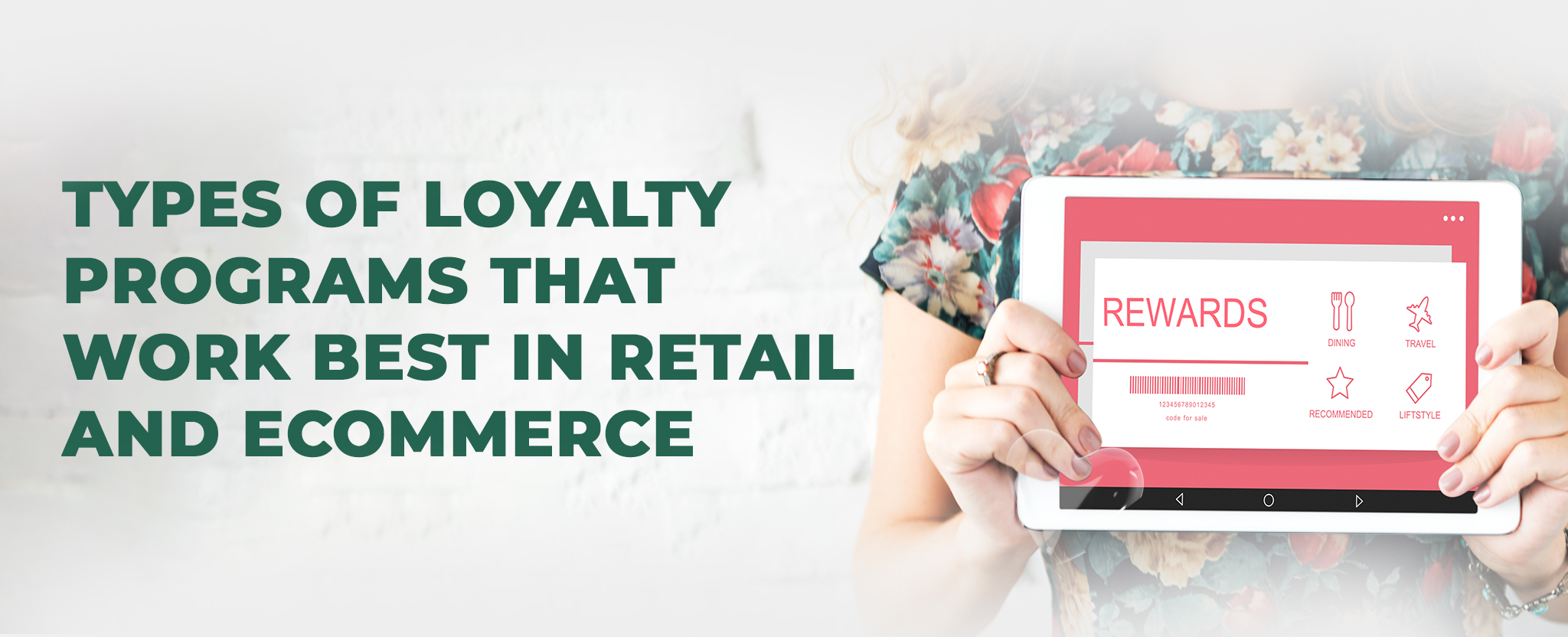

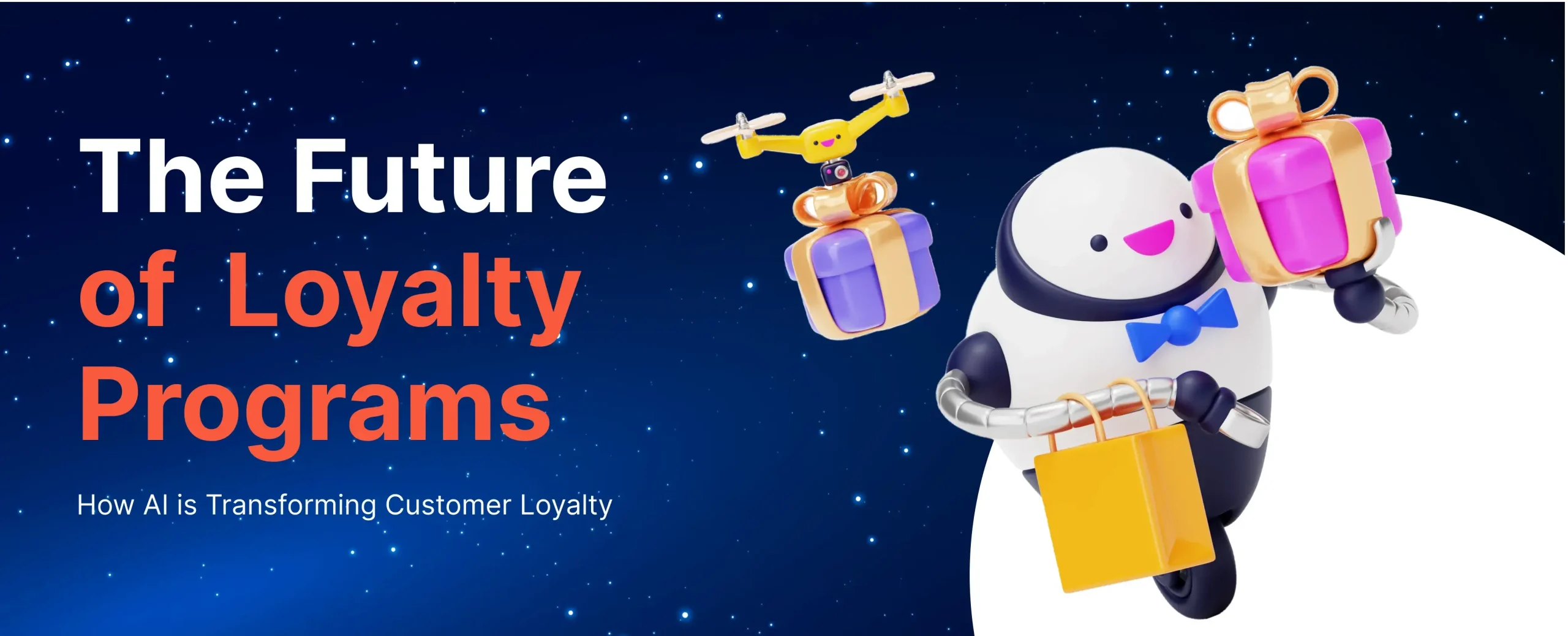
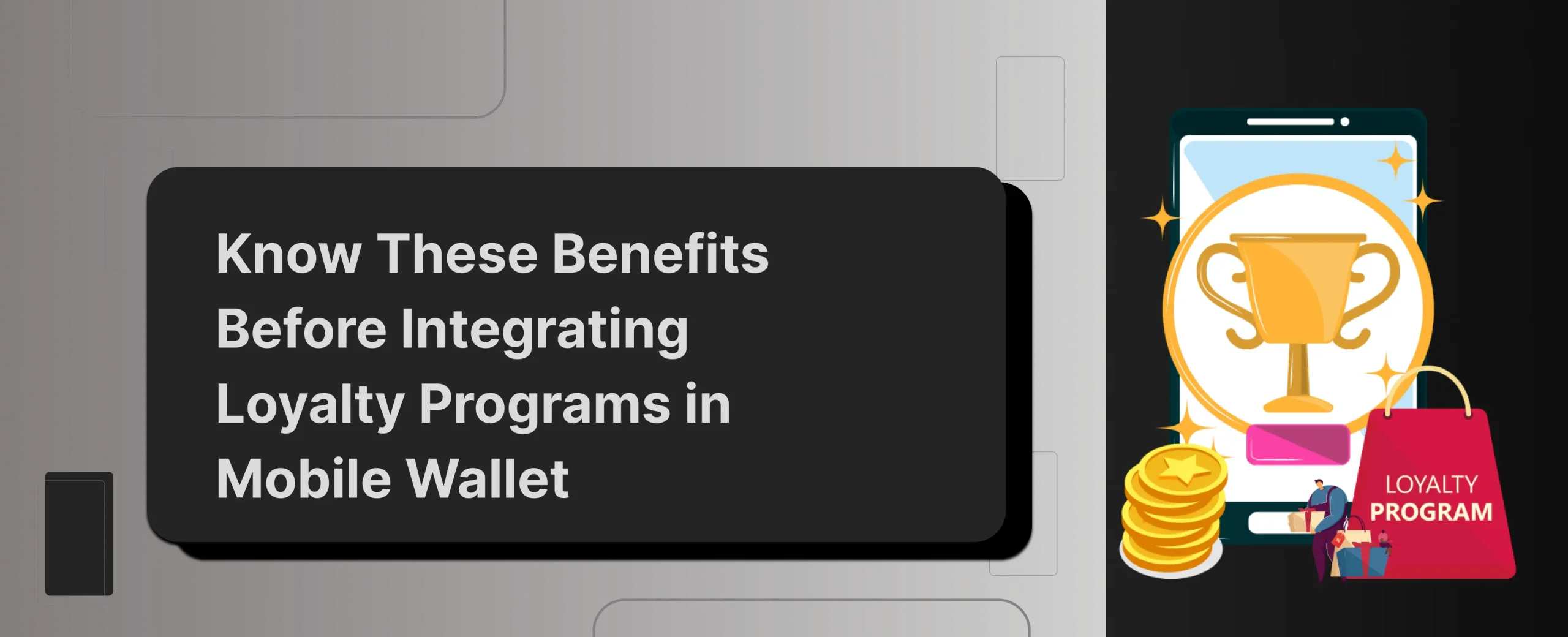






Comments